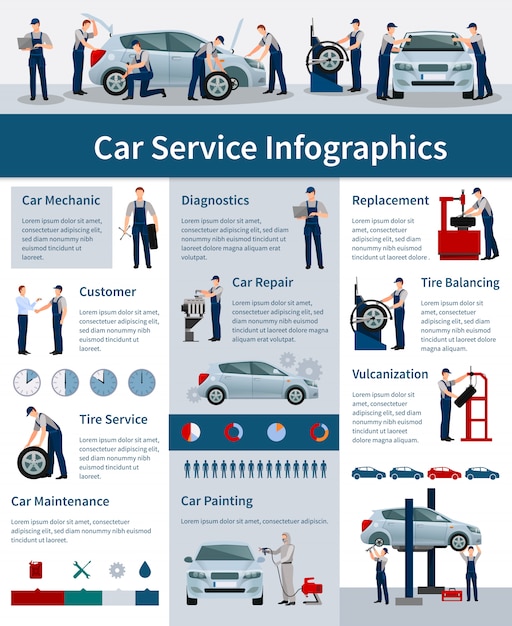Brake System Insights: Regular Issues And Effective Repair Work Approaches
Brake System Insights: Regular Issues And Effective Repair Work Approaches
Blog Article
Authored By-Jansen Damborg
When it comes to your vehicle's brake system, comprehending common issues can conserve you from potential security dangers. From identifying brake pad wear to resolving brake fluid leakages, understanding how to take on these troubles is important. However what about those spongy brake pedals? There's just click the next site for that also. Keep tuned for more information concerning these problems and the useful solutions that can maintain you safely on the road.
Brake Pad Use and Substitute
When it involves preserving your car's brake system, one important facet to keep an eye on is the wear and substitute of brake pads. Brake pads are vital components that push against the brake rotors to slow down or stop your vehicle. Over time, these pads wear down as a result of friction, needing routine inspection and substitute to ensure your brakes work effectively.
To determine if your brake pads require replacement, listen for shrilling or grinding sounds when you use the brakes. Additionally, if your vehicle takes longer to quit or you observe resonances or pulsations when braking, it might be time to replace the brake pads.
Ignoring used brake pads can bring about decreased stopping efficiency, damage to various other brake parts, and even brake failing.
Changing brake pads is a relatively uncomplicated procedure for numerous lorries. Nevertheless, if you're unsure or uncomfortable performing this job, it's best to speak with a specialist auto mechanic to guarantee proper setup and optimal brake efficiency.
Regularly checking and changing brake pads is essential for your safety and security and the long life of your lorry's stopping system.
Brake Liquid Leaks and Upkeep
To ensure your lorry's brake system works optimally, it is essential to also focus on brake liquid leakages and maintenance. Brake liquid is essential for transferring the force from your foot on the brake pedal to the real stopping system. One usual problem with brake liquid is leakages, which can take place as a result of scrubby brake lines, seals, or links. If you discover a puddle or leaks under your auto, it's important to deal with the leak promptly to prevent a prospective brake failing.
Regularly examining your brake liquid level is essential to preserving your brake system. Reduced brake liquid can result in air getting in the brake lines, which jeopardizes braking efficiency.
In https://sethtkcsj.idblogz.com/30871797/learn-about-the-key-activities-to-absorb-order-to-locate-the-ideal-vehicle-service-center-that-will-boost-your-car-s-life-span-and-performance , old or contaminated brake liquid can influence the overall efficiency of your brakes. It's recommended to adhere to the supplier's guidelines on when to change the brake liquid, usually every 2 years.
Spongy Brake Pedal: Blood Loss Brakes
If you've ever before experienced a mushy brake pedal while driving, you understand the significance of maintaining a firm and receptive stopping system. https://dominickgfzto.qodsblog.com/30378272/dive-into-the-world-of-automobile-repair-work-innovation-to-reveal-the-turbulent-innovations-that-are-revolutionizing-the-industry of a spongy brake pedal is air entraped in the brake lines. When air enters the brake system, it can bring about a loss of hydraulic stress, leading to that unsettling mushy feeling when you push the brake pedal.
To fix this problem, hemorrhaging the brakes is essential. Bleeding the brakes includes getting rid of the air from the brake lines to restore appropriate hydraulic pressure.
To hemorrhage the brakes, you'll require a helper to help you. Beginning by finding the brake bleeder shutoff on each wheel, generally discovered near the brake caliper. With a wrench, loosen the valve and have your helper press the brake pedal while you observe any kind of air bubbles coming out. Repeat this procedure for every wheel, beginning with the wheel farthest from the master cylinder and moving closer.
Once you no longer see air bubbles and only clear fluid arises, tighten the valve and top up the brake liquid tank as needed. Hemorrhaging the brakes assists ensure a company brake pedal and enhances total braking efficiency.
Verdict
Since you understand typical brake problems and how to fix them, you can ensure your car's security and performance. Keep in mind to pay attention for indication like shrilling sounds or mushy brake pedals, and address them promptly. Normal maintenance and prompt replacements are vital to keeping your brakes in leading condition. Keep proactive and conscientious to your brake system to appreciate risk-free and trusted driving experiences.
